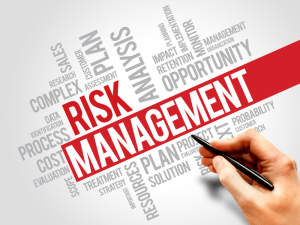How to Talk About Risk Management With Your Clients
The coronavirus outbreak has wreaked havoc on people's daily lives and the financial world. When it comes to their investment portfolios many tend to have a low-risk tolerance and with the unsettling economic situation with the ongoing pandemic, the word “risk” has become even more of a fearsome word for clients.
However, amid these fears, it has become difficult for financial advisors to explain to clients that taking appropriate risks is deemed necessary in order to ensure your portfolio has the growth potential to reach your financial goals.
Understand What The Word “Risk” Means To Your Client
Before even beginning to educate your client about risk management and bringing up any new financial jargon into the conversation, you need to ask your client what the word “risk '' means to them.
How do they define the word in terms of their current financial situation?
For some, risk means “How much do I have to lose before I start to seriously panic?”
For others, it may just mean facing a set of unprecedented events that enable them to reach their financial goals. Then there may be those who consider taking risks an opportunity to achieve great financial gains. See the difference?
While there may be contrasting views of risk among different clients, your method for discovering what sort of feelings and fears the word evokes in your client should be the same. Understanding what the word risk means to your client is very closely related to determining your client’s risk tolerance.

One great way to ascertain both is to include various questions regarding risk in the questionnaire you have shared during your pre onboarding process. This will allow you to get a general sense of where your client’s risk tolerance stands.
Good communication is the key to a successful advisor-client relationship. Its foundation should be laid during the initial stages of the onboarding process. After receiving the questionnaire, make sure to discuss the answers your client has submitted. Make further inquiries by proposing various scenarios.
- What actions would they be inclined to make in case of a 3% loss versus a 15% loss?
- Would they consider a 5% return worth taking a risk or 20%?
Related: How to Determine Your Client’s Risk Capacity!
How To Define Risk Management
About half of non-retired adults say the economic impact of the coronavirus outbreak will make it harder for them to achieve their long-term financial goals, according to a new Pew Research Center survey. It is a financial advisor's job entails managing a client’s finances and advising about financial strategies that help achieve their financial goals.
But how can those goals be achieved if a client with a low-risk tolerance chooses to keep their money stagnant by “keeping it under the mattress”? Or, in the case of a high-risk tolerant client, takes the “all hands in'' approach with every investment opportunity? The extremity of the actions, in either case, could result in failure to achieve those financial goals.

It is essential your client understands what risk management is and its significance. In the literal sense, it is identifying potential financial risks in advance, analyzing them, and then taking preemptive actions to reduce or curb those risks. Explain to you that every time they choose to invest (or not invest) they are exposing themselves to certain risks and it is your job to help minimize them or guide them to take countermeasures to those risks.
A client needs to well understand that making uneducated financial decisions can wreak havoc on one’s portfolio and can be a source of great financial distress during an economic downfall or personal financial crisis. Risk management is the safeguard a portfolio needs to keep your client’s portfolio optimal in case of a crisis such as sudden inflation, pandemic, health, and economic-financial threats.
Explaining The Risk Of Not Investing To Risk-Averse Clients
With the increased volatility of the financial market after the pandemic, clients are even more reluctant to take risks than ever before. Therefore, it is understandable that any risky investment opportunities would cause angst in a lot of your clients. But risk and investments are two sides of the same coin.
It is essential that you communicate to your client that not investing can pose greater risks than investing. Make sure to mention the following risks that come with not investing.
Unable to achieve life goals
Achieving goals such as building wealth or buying a new house or car warrants a growing portfolio. That requires investing.
Depletes the value of money
Inflation is the biggest cause of reducing the value of savings. The $5000 saved today could be worth no more than $2000 in just a few years. Investing is a way to counter that.
The “miracle of compounding”
“Compound interest is the eighth wonder of the world. He who understands it, earns it … he who doesn’t… pays it.” (Albert Einstein) Also known as interest on interest. Shying away from investing makes you miss the chance to take advantage of the multiplier effect on wealth.
The missed opportunity to grow your wealth
Life can be unexpected, and financial contingency plans should always be in place in case of emergencies. Keeping your savings under the mattress not only depletes their value but misses the chance to grow with time. Investment can help increase your wealth to help prepare for times of trouble.
Dealing With Risk-Takers
Just as you may come upon clients who are averse to taking risks, you may meet those who are high-risk takers. Here we don’t mean those who take educated risks but those who take the aggressive approach to invest: the kind that could result in huge financial gains or…a path to portfolio destruction.

Since these sorts of clients do not take the conservative approach to investment, it is your job to make sure they understand the risk of “losing it all.” You can begin that by asking yourself questions that allow you to understand where your client is coming from and how to best approach them so that you may guide them to achieve their financial goals with ease.
- What sort of behavioral biases drives this client?
- What past events might have been the inciting incident to this behavior?
- How do you plan to approach such a client? Will you moderate their behavior or design an investment strategy to adapt to their behavior?
When designing a financial strategy for such a client, it is essential you pay special attention to two key factors: diversifying their portfolio to withstand their aggressive risk tolerance approach and ensuring their portfolio is under the accepted limit of risk-reward trade-off so that they don’t end up losing all their money with their next risky investment venture.
To Sum It All
No matter how well-strategized and documented your approach may be to assessing your client’s risk tolerance or how experienced you may be at determining how well they understand the importance of risk management, each client still requires a unique and personal touch to a certain degree.
How you will be required to give your clients solutions that placate their concerns, depends on how well you have understood your client and their approach toward their investment portfolio.
Ensuring your client understands risk management requires you to ask the right questions about what “risk” means to your client and determine the tolerance level of your client. Only then can you proceed to manage their portfolio well enough to help them achieve their financial goals.




